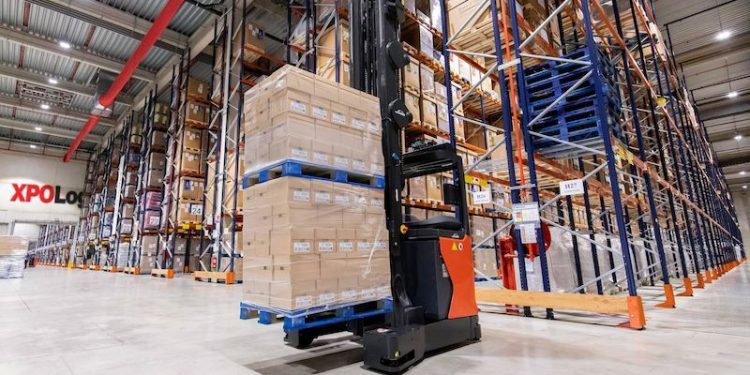Advanced Energy Solutions Deliver ROI

Exploring how battery management systems provide rapid payback.
Industrial trucks mainly use lead-acid batteries, but lithium-ion (li-ion) batteries are increasingly finding their way into warehouses and manufacturing facilities. One of the perceived barriers of entry, however, is the upfront cost of li-ion versus lead acid. The Return on Investment (ROI) includes many factors, some of them unexpected. A sophisticated battery management system (BMS) is one of the benefits of modern lithium-ion energy systems that has a positive impact on ROI.
For example, The BMS of advanced modern lithium batteries use data to equalize the charge levels of the cells using multiple sensors, optimizing the performance of Li-ion batteries. Some of these batteries are Wi-Fi enabled, allowing for an easy and remote transfer of information from the BMS. A battery with well-synced cells always performs at its best, translating to higher lifting and travel speed and improving the efficiency of forklift drivers. More trips per shift equates to higher equipment utilization. Fewer errors mean fewer breakdowns and less downtime.
To better understand the sophistication level of a li-ion battery, think of a constant flow of information that keeps the battery operating at a high level around the clock. A BMS will continuously track all the cells and maintain their performance at the optimum level. It will monitor all the sensors inside the battery for safety, reliability, voltage, amperage, state of charge, state of health, and energy throughput, among other data points. When the battery systems are Wi-Fi enabled to connect with a cellular router, or with a local network, the data can move from an internal memory drive to the cloud. Some manufacturers provide customers with a Web-based interface to access the data and analytics. This can provide customizable reports, warnings, and alerts on individualized batteries or locations.
The benefits of the BMS analytics are multiple. Among the payoffs are real-time diagnostics and predictive maintenance; data analytics for each battery help with fleet management, optimizing the work of the fleet, and eliminating inefficiencies in day-to-day operations. Other payoffs include predictive and remote maintenance and precise information on the number of cycles each battery uses. This helps guide users on when to replace the battery when it reaches the end of life and maximizes uptime when it’s still highly functional. The BMS data can also contribute to sustainability efforts by tracking the carbon footprint of the fleet, something of increased importance today.
Lead-acid batteries do have their own data capabilities. However, most don’t compete with the modern lithium battery on how much data they can collect and analyze in real-time and the data is generally collected from the charger, rather than directly from the battery.
On average, with the switch from lead-acid to li-ion, some fleets have realized a 20 percent to 40 percent savings over a fleet’s total cost of ownership in about two to four years. Generally, the higher the usage profile, the faster the payback is. That calculation includes the cost of the trucks themselves, the batteries, chargers, infrastructure, electricity, and maintenance labor. When a lithium battery has reached the end of its life cycle, companies can still capture some value when repurposing it for other less demanding jobs, such as energy storage for solar systems. An exact value for repurposing is tough to pinpoint right now, but the second-hand battery market is taking off.
While it is hard to quantify the efficiencies that come with fleet management improvement from a sophisticated BMS, it does represent a big step forward and will help achieve your calculated ROI.
Source: Maxim Khabur
For more information about the Advanced Energy Council: mhi.org/aec
For further articles from the Advanced Energy Council:
Achieving ROI with Advanced Power Sources
Advanced Power ROI: Efficiency



